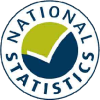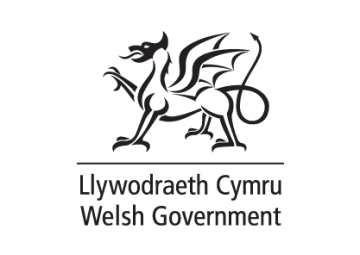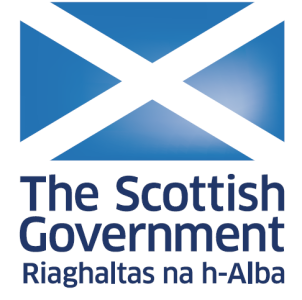Higher Education Student Statistics: UK, 2016/17 - Subjects studied
- Summary
- Student numbers and characteristics
- Where students come from and go to study
- Subjects studied
- Qualifications achieved
- Notes
What are students in HE studying?
All analyses of subject data is shown in Full-person equivalent (FPE). These are derived by splitting student instances between the different subjects that make up their course.
Figure 13 shows the change in the number and percentage of students undertaking each subject, between 2015/16 and 2016/17. For first year undergraduate students, the largest percentage increase was in Computer science, at 4%, although the absolute change was not the highest at 1,175. Business & administrative studies had the largest absolute increase in first year undergraduates, at 2,395 additional students in 2016/17. The percentage increase equated to 3%. The subjects with the most noticeable percentage and absolute decreases in first year undergraduate students were Combined subjects at a decrease of 8% (1,530 students) and Subjects allied to medicine at a decrease of 2% (2,020 students).
In terms of first year postgraduate students, there was an increase in every subject between 2015/16 and 2016/17, except for Medicine & dentistry and Combined subjects. The largest percentage increase was seen in Biological sciences at 25% (4,645 students) but the largest absolute increase was in Business & administrative studies at 5,000 (8%).
Amongst part-time students, there was a 19% increase in students studying Creative arts & design between 2015/16 and 2016/17 (an increase of 2,475 students). This increase was even larger among part-time undergraduate first year students, at 39% (910 students). A large part of this increase was due to an alternative provider merging with the University of the Creative Arts, which led to a large increase in their part-time first degree student numbers. Medicine & dentistry saw a 3% increase in undergraduate first year students, despite there being a 40% decrease in undergraduate first year students studying Medicine & dentistry part-time.
Figure 13 - Change in HE student enrolments by subject area between 2015/16 and 2016/17
Show:
Business & administrative studies attracted the highest number of students in 2016/17, at 333,425. The subject with the lowest number of students was Veterinary science, at 7,145. These two subject areas have been consistently largest and smallest in terms of student numbers over the last five years. Patterns varied by mode and level of study. The subject with the highest number of full-time first degree students in 2016/17 was Business & administrative studies, at a five year high of 202,550 students, followed by Biological sciences, at a five year high of 155,860 students. The subject with the highest number of part-time first degree students was Biological sciences, at 22,325 in 2016/17.
Female students in 2016/17 were more likely to study Subjects allied to medicine than any other subject. Of first year female students, 19% chose to study Subjects allied to medicine. In comparison, male students in 2016/17 were most likely to study Business & administrative studies. Of first year male students, 19% chose to study Business & administrative studies. Female students dominated many subject areas, in particular Subjects allied to medicine, Veterinary science and Education (representing 80%, 77% and 74% of students on those courses). Male students dominated only five subjects, all of which were Science subjects. Those with the highest percentage of male students were Engineering & technology, Computer science and Mathematical sciences, at 81%, 81% and 62% respectively. Statistics published by Eurostat in June 2017 show similar trends in subjects studied by male and female students in higher education across the EU. In 2015, 74% of all students studying engineering, manufacturing and construction related subjects were male. In the same year, 78% of students studying education and 72% of students studying health and welfare related subjects were female (source: Eurostat).
The number of students studying Science subject areas has increased year on year between 2012/13 and 2016/17. In percentage terms, 46% of all students were studying Science subjects in 2016/17, compared with 43% in 2012/13. Amongst first year students, the same overall trend was apparent, although the percentage of first year students undertaking Science subjects was lower (at 43% in 2016/17 compared with 40% in 2012/13). A higher proportion of undergraduate students were undertaking Science subjects than postgraduate students overall, although 62% of postgraduate (research) students were undertaking Science subjects compared with just 38% postgraduate (taught) students (see figures 14 and 15).
Figure 14 - HE student enrolments by subject area and sex
2012/13 to 2016/17
Show last:
Figure 15 shows the percentage of students of certain characteristics, studying Science subjects. There was a continued rise in the percentage of female students studying Science subjects (from 39% in 2012/13 to 42% in 2016/17). Amongst first year full-time students, just 37% of females were studying Science subjects, whereas this figure was 42% of all first year full-time students. Amongst first year part-time students, 49% of females were studying Science subjects, compared with 48% for all first year part-time students.
Figure 15 - Percentage of HE student enrolments in science subject areas by personal characteristics
2012/13 to 2016/17

Embargo
11 January 2018, 9:30
Coverage
UK
Release frequency
Annual - view all releases (1998/99 - onwards)
Pre-release access
View pre-release access list for this release
Themes
Children, education and skills
Issued by
HESA, 95 Promenade, Cheltenham, GL50 1HZ
Press enquiries
01242 211120
Public enquiries
01242 211133
Statistician
Rebecca Mantle




